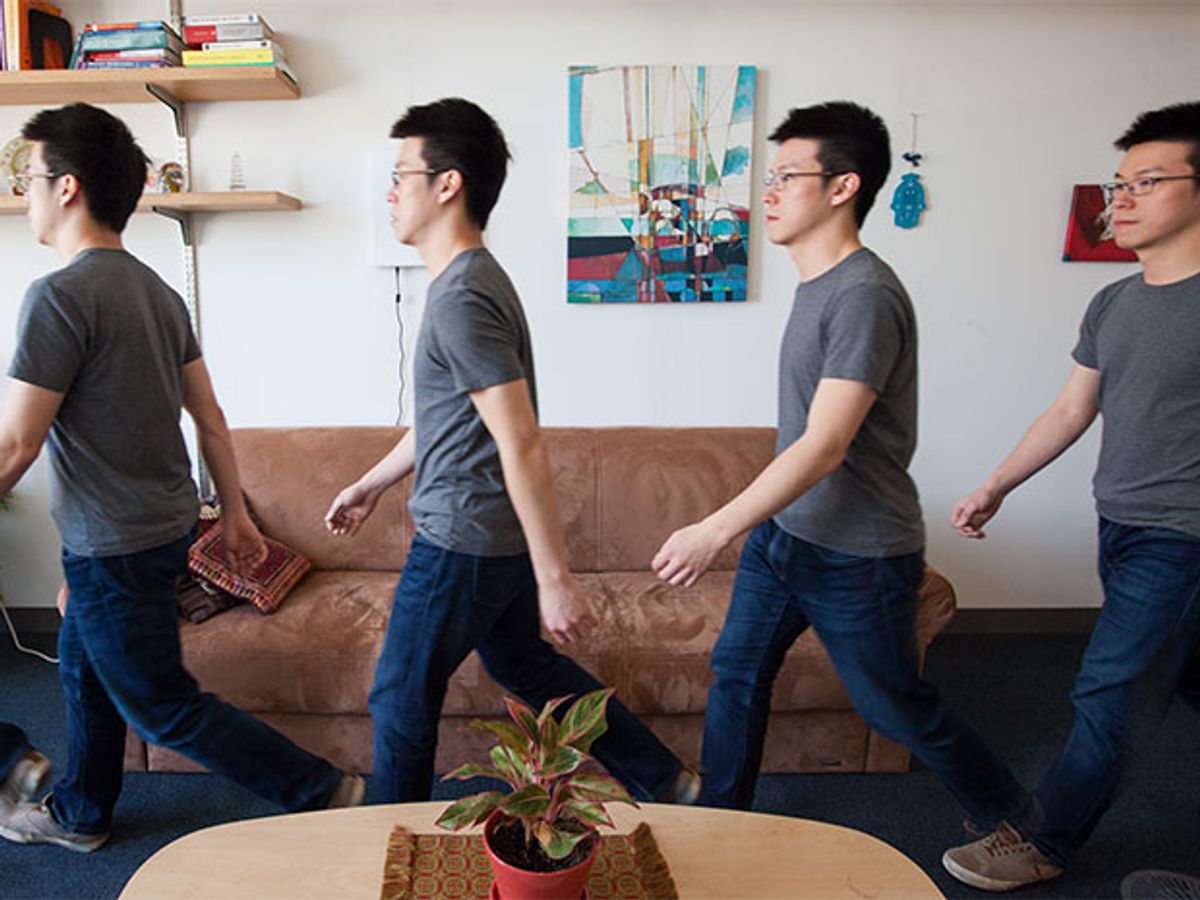A smart home with walls capable of monitoring each person’s health without wearable fitness trackers just got a step closer. A research group based primarily at MIT has shown how a picture-size wall sensor can detect the walking speed and stride length of people based on how their bodies interfere with radio signals.
The WiGait system works by transmitting low-power radio signals and analyzing how those radio signals reflect off of people’s bodies within a radius of 9 to 12 meters. It can also detect the walking patterns of multiple people and works across physical barriers such as walls within a home. According to its inventors, this “invisible” sensor could combined with wearable devices used to track other fitness measures—especially for older people with chronic conditions such as Parkinson’s disease and multiple sclerosis.
“Technological advances have made it possible to envision a world where the home can use ambient wireless signals to monitor the health of its occupants, track metrics related to chronic diseases, and alert the caregiver for health emergencies and risks,” says Chen-Yu Hsu, a Ph.D. student at the Computer Science and Artificial Intelligence Laboratory at MIT.
The MIT researchers previously showed that similar analysis of radio signals could reveal the breathing and heart rate of people without requiring wearable devices, Hsu says. Their latest WiGait demonstration—a collaboration that includes the Hong Kong University of Science and Technology and Boston University School of Medicine—showed it could accurately track the walking speed and stride length.
Walking speed can help predict health events related to conditions such as heart failure, certain lung diseases, kidney failure, and stroke. Both walking speed and stride length can also help assess the fall risk of seniors and their ability to handle normal activities such as bathing and eating. The United States has 13 million seniors living alone at home who might benefit from such as fairly non-invasive method of health monitoring. The research team are scheduled to present the results of their study at the Association for Computing Machinery’s (ACM) Conference on Human Factors in Computing Systems (CHI 2017) being held in Denver, Colorado next week.
Early testing even provided glimpses of how WiGait could help reveal a much broader set of health conditions. One of the early tests in a private home detected a person waking up at night to pace back and forth. It turned out that the individual happened to suffer from severe anxiety. Such information could help tip off caregivers and allow them to help the people in question.
“We all worry about the health of our parents and grandparents,” Hsu says. “We’ve experienced first hand the need for in-home, non-invasive health monitoring to give us peace of mind about our parents’ health.”
Test deployments in homes showed that people quickly became comfortable with the WiGait radio transmitter and sensor—called the WiTrack—and did not have much in the way of privacy concerns. That’s likely because the WiTrack system can only detect the presence and location of motion.
But people seemed more alarmed about privacy issues when asked if they would allow cameras or Microsoft Kinect devices to track their walking speed and stride length. Such devices can also capture the shape of people’s bodies.
Past research has shown that a person’s walking speed can be used to identify individuals. The WiGait team says it could add that capability to the system, but wants to be mindful of the possible privacy issues involving multiple people in such monitoring environments.
The researchers faced a challenge in developing the WiGait system’s ability to monitor walking speed and stride length based purely on weak radio signals. They relied upon machine learning algorithms—a popular form of artificial intelligence capable of finding patterns in large collections of data—to separate out walking periods from other activities and find the stable phase within each walking period to analyze speed and stride length.
Early comparisons with standard test methods have proven promising. WiGait proved it could compute walking speed with an accuracy 95-99.8 percent across all 18 test participants. The accuracy for stride length varied more—between almost 86 and 99.8 percent.
This initial WiGait demonstration focused on showing it could accurately track the walking patterns of healthy people. But a next step for the MIT group and their colleagues at the Boston University College of Health and Rehabilitation will refine WiGait to make sure the system can accurately track the walking patterns of people with chronic health conditions. And they have been thinking of spinning out a startup to commercialize the technology, says Hsu.
Jeremy Hsu has been working as a science and technology journalist in New York City since 2008. He has written on subjects as diverse as supercomputing and wearable electronics for IEEE Spectrum. When he’s not trying to wrap his head around the latest quantum computing news for Spectrum, he also contributes to a variety of publications such as Scientific American, Discover, Popular Science, and others. He is a graduate of New York University’s Science, Health & Environmental Reporting Program.



